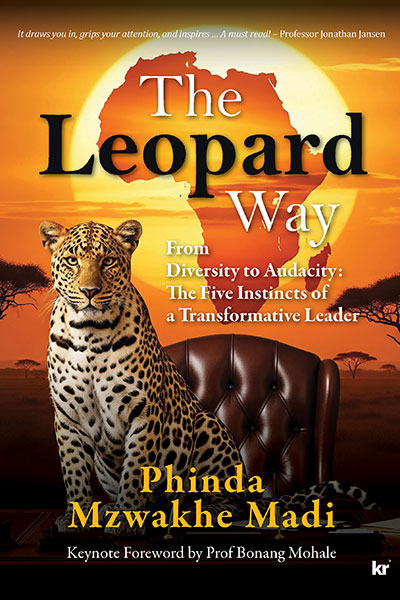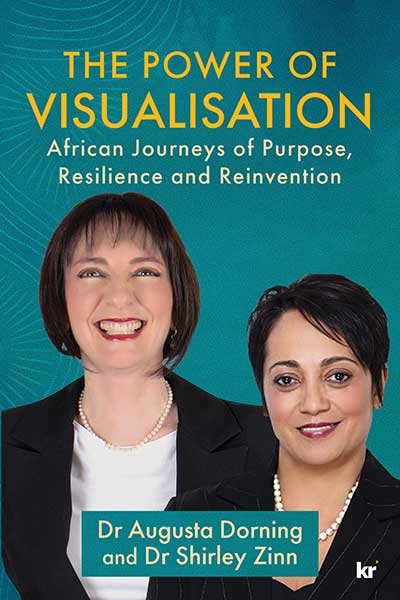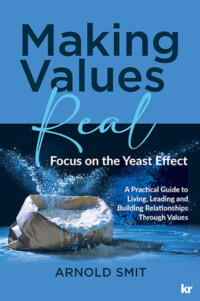By Dr Arnold Smit
April 14, 2025
Are you someone who believes in the power of everyday values such as honesty, respect, responsibility, fairness and compassion? Do you want these values reflected in your relationships, work, and leadership? And do you, like many others, wonder why this seemingly straightforward desire can often be so challenging to accomplish?
In our pursuit of making values real, we are dealing with an interesting paradox. Values are real, but we must work on making them real. Values are ever-present in our relationships, work and leadership, and yet if we want to enjoy their benefits, we have to consciously uphold them. The neglect or violation of values causes unpleasant consequences such as broken relationships, moral failures and reputational damage.
The challenge that we are faced with is therefore one of making values real more consistently across the variety of situations in which we interact with others, whether in ordinary conversations or formal meetings, in everyday choices or serious decisions, among family and friends or in organisational settings, processes and transactions.
Having spent so much time with people in classrooms and workshops sharing with me their challenges of making values real, I decided to write a book on the topic. And so Making Values Real: Focus on the Yeast Effect came into being.
The book’s title suggests two focal points, namely, a process and a central metaphor. The former is encapsulated in “making” and the latter in “yeast”, and both speak about what it takes to make values real.
From a process perspective, it is a guidebook that takes the reader through five process-based practices, namely, giving meaning to values, dealing with values conflicts, nurturing personal values consciousness, integrating values in organisations, and cultivating values through training. All these process concepts have one common message: making values real requires conscious and consistent attention over time. The benefits, though, of doing it well, can barely be overestimated. Personally, relationally, in organisations, and in society we enjoy multiple benefits of making values real in one situation after the other. The more often we get this right, the better prepared and more competent we shall be when dealing with those inevitable values conflicts that ever so often also come our way.
The question now is what yeast has got to do with the process of making values real. In our relationships, conversations, decisions and actions, values work like yeast works in the baking of bread. In bread-baking you may have all the other ingredients, but without the yeast carefully prepared and kneaded into the dough, nothing will rise and there will be no bread to enjoy. Yeast may look so insignificantly small compared to the other ingredients, and yet it has such an exponential impact. Similar to yeast, values are not about mass, but about personal agency and dispersed influence across a variety of interpersonal interactions.
Where the yeast of values is at work, we enjoy multiple benefits. Where values as yeast are absent or violated, we suffer the consequences, whether individually, relationally or organisationally. Making values real brings zest to our work and relationships in the same manner as enjoying freshly baked bread with others. Where the yeast of values is absent, has gone stale, or is inappropriately used, we lack engagement, suffer loneliness or end up in division.
Working with values in a yeast-like manner is therefore about being proactive by consciously working values into our conversations, meetings, operations and decisions. This does not mean that we constantly have to use values words, but it does mean that we carefully consider how the values that we hold dear determine what we think, say, decide or do in every situation. This counts for us personally as well as in how we engage with others relationally.
The book supports the reader with mastering the “yeast effect” in several ways. You will learn about practical strategies to understand and navigate situations where your values are challenged. You will also be presented with alternative perspectives and communication methods that challenge rationalisations and facilitate values-driven actions. You will furthermore discover how regular reflection on your values and experiences builds values consciousness, how to discuss values to make their meaning personal and shared, how thoughtful questions can guide discussions towards values-driven outcomes, and how to use active listening to foster trust and create space for meaningful dialogue on values-sensitive topics.
The book also has a Giving Voice to Values Canvas to guide you through values conflicts and values-driven decision-making. At the end, there is also a playbook with exercises that can be used for personal benefit or in organisational and training processes.
In the end, making values real is not just about us using values as yeast but about becoming yeast ourselves.
Reference:
Smit, A. (2025). Making Values Real: Focus on the Yeast Effect. Knowres Publishing.
If the ideas in this article resonated with you and you’re ready to bring more meaning, consistency and impact to your personal or organisational values journey, this book is a must-have guide. Making Values Real: Focus on the Yeast Effect is filled with practical tools, reflective exercises and powerful metaphors to support your growth as a values-driven leader, colleague or coach.














